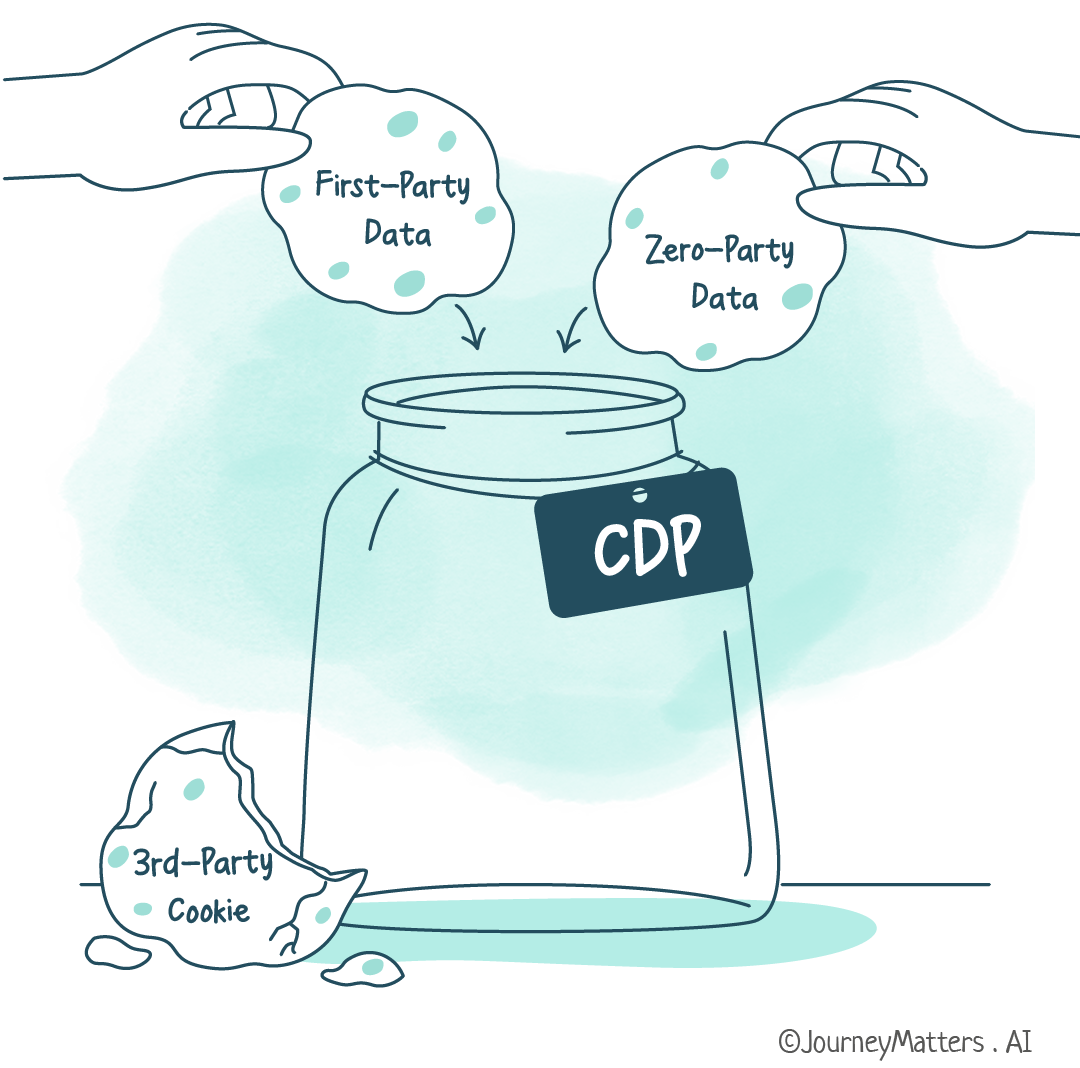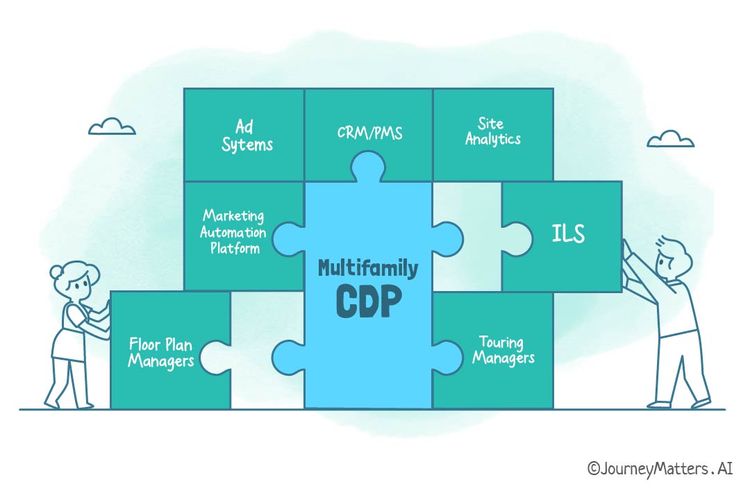Introduction to Multifamily CDP: Unlock the True Value of Data

Multifamily today has a treasure trove of data that can enable the onsite and offsite teams to enhance resident and prospect experiences. However, with properties dispersed geographically, collating and providing the data to your teams isn’t easy.
According to a report by John Burns Real Estate Consulting and AppFolio, 80% of property managers [1] find it challenging to access the data and insights they need. This is where a Customer Data Platform (CDP) comes into the picture.
In this blog, we will explore the CDP features and their need in multifamily.
What obstacles does multifamily face with its data?

Multifamily faces a number of obstacles when it comes to managing & leveraging resident & prospect data. The major obstacles include:
- Data stuck in silos: Multifamily data is scattered in multiple systems, making it difficult for marketers to access and analyze it. Multifamily data silos look like as below:
- Google Analytics: Stores early prospect events
- Marketing Automation Platforms(MAPS): Contain prospect’s mid-journey events
- PMS/CRM: Agent actions, prospect preferences, and behavior reside in PMS/CRM
- Ad Systems: Stores lead generation ad events
- Internet Listing Services: Contains referral data
An absence of proper data management means missed opportunities for insights to improve resident and prospect experience.
- Monolithic obsolete applications that are difficult to integrate: Many multifamily properties still rely on legacy applications that were designed before big data analytics and Artificial Intelligence. These monolithic systems can be difficult to integrate with modern data platforms and tools, and may not be able to support the scale and complexity of today's data-driven business processes.
- Lack of data standardization: Finally, a lack of data standardization can make it difficult to compare and analyze data across different systems or sources, leading to inefficiencies and errors in decision-making. Without clear standards for data formatting, definitions, and quality, it can be difficult to ensure that data is accurate, consistent, and usable for analytical purposes.
To overcome the data challenges, multifamily needs a strategic approach to managing data, as well as embracing the latest technology to integrate and standardize data. A CDP does all that and more.
Why does multifamily need its own CDP?

The need for a CDP stems from the several benefits it provides for multifamily marketing.
- To unlock the true value of their data: By bringing together data from disparate sources, a CDP provides a unified view of customer data that can be used to drive insights and actions. This can lead to better decision-making and more effective marketing campaigns.
- To understand resident and prospect behavior & preferences: A CDP can capture and analyze data across property websites, social media interactions, tour schedulers, guest cards, communication preferences, and amenity usage, etc. It can then provide valuable insights into what drives resident satisfaction and retention, and what features, and amenities are preferred by prospects. This information can be used to tailor marketing and communication efforts to better meet the needs and expectations of prospects and residents alike.
- To achieve multifamily goals: By providing a centralized hub for prospect and resident data, a CDP enables more effective targeting and messaging across channels. This can drive more tour schedules, and more leases, while also improving resident satisfaction and retention by providing a more personalized and relevant experience.
What makes CDP a platform?

CDP is a "Platform" because it is a software system that provides a range of features and capabilities for collecting, organizing, and activating customer data from various sources.
Following are some of the key features of a CDP:
- Data integration
CDP collects and unifies customer data from various sources, including CRM systems, leasing and property management systems, social media platforms, Google Analytics, ILS, marketing automation platform, etc.
- Unified view of customers
Imagine a lead fills in a Guest card as John Miller. Next time, he contacts an agent and introduces himself as Johnathan Miller. The agents create a new entry for Johnathan who was already in the system as John. Thus, there are two leads in CRM for the same person!
With a CDP, you can organize data into a unified 360-degree view of each customer by matching and merging data from different sources, resolving conflicts, and deduplicating records. Hence, with CDP, the two records will be consolidated to create a golden record for Johnathan Miller
- Delivers audience streams
Once CDP creates a single source of truth for each lead, it can segment the audience based on channel attribution, demographics, behavior, preferences, etc.
The CDP can then deliver these audience streams to downstream systems such as GA, ILS, PMS, Ad Systems, etc. for activation.
- Targeted marketing campaigns
A CDP provides insights into the prospect's behavior, preferences, and interactions across all touchpoints and channels, thereby helping marketers and agents to create targeted marketing campaigns to increase prospect acquisition and resident retention.
- Provides APIs and connectors
A CDP provides APIs and connectors to integrate with other systems, making it easier to access and use customer data.
Conclusion
CDP is an essential tool for multifamily to unlock the true value of their data. By unifying data and providing a comprehensive 360-degree view of each customer, a CDP enables marketers to personalize campaigns and achieve lead nurturing, prospect acquisition, and resident retention goals.
In the coming articles, we will discuss the problems that CDP can solve for multifamily, including data feeding, data activation, and 3rd party data phase-out problems.
Is there any topic on your mind that we might have missed? Let us know in the comments.
Resources
- 80% of property managers find it challenging to access the data and insights they need- AppFolio & Johnburns report.



Member discussion